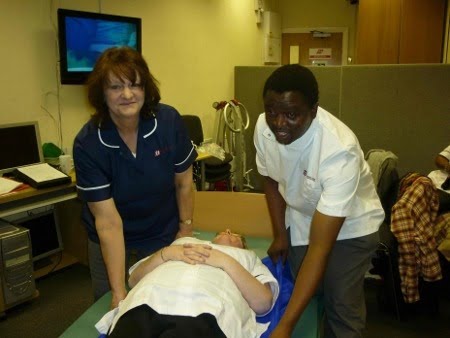Mission Statement
Medilink will promote the best practice by engaging with and encouraging staff to develop their skills, to improve the lives of vulnerable people in our society.
First Aid Awareness
Intended Learning Points
- The differences between being a “first aider” and being “first aid aware”
- What first aid is
- Helping, supporting and assisting a first aider
- Your accident procedures
- Accident reporting and recording
- Danger, response, airway and breathing
- CPR
- Examining a casualty
- The importance of the recovery position
- Why the casualty’s circulation is so important to their well being
- First aid boxes
- Issues that may arise after an incident
- Infection control in first aid situations
- Dressings
- Bandages
- Bleeding, nosebleeds, cuts, grazes
- Bruising
- Head injuries, concussion, dizziness
- Hip, pelvis, leg injuries
- Fractures and dislocations
- Spinal injuries
- Strains and sprains
- Ice packs
- Eye injuries
- Burns, scalds and sunburn
- Heat exhaustion and heatstroke
- Hypothermia
- Drowning
- Swallowed or inhaled substances
- Drugs and alcohol
- Food poisoning
- Electrocution
- Heart attacks
- Stroke
- Seizures, fits
- Shock and anaphylactic shock
- Asthma attacks
- Choking
- Vomiting and diarrhoea
- Abdominal pain
- Headaches and migraines
- Diabetes
- Bites and stings
- Traffic incidents
- Note:
- The topics covered are within the context of being first aid aware. This resource is not intended to train first aiders, which requires formal training through the Red Cross or St John’s Ambulance for example.

